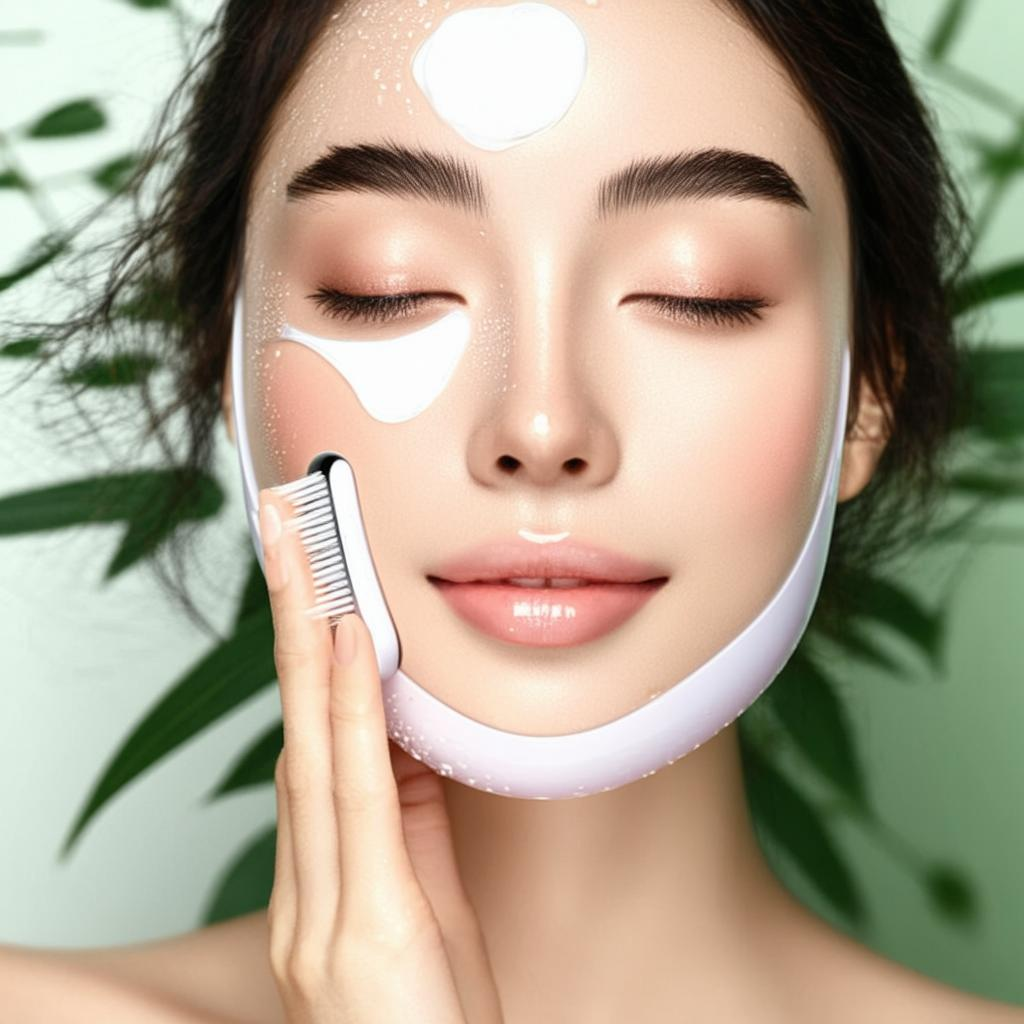Biodegradable Makeup: A 2025 Essential for Sustainable Beauty
Ever wondered if the products in your makeup bag are hurting the environment? By 2025, it’s clear that
biodegradable makeup is no longer just a buzzword—it’s the next big thing in a growing movement toward
eco-friendly living. Whether you’re someone who wants to do your part for the planet or simply curious about the latest beauty
trends, biodegradable cosmetics let you enjoy your favorite looks without leaving a lasting mark on Earth.
In this piece, we’ll explore what makes biodegradable makeup different, why it matters, and how you can make the transition.
By the end, you’ll see that these green choices aren’t just gimmicks—they’re a real solution for our planet’s future.
1. Introduction to Biodegradable Makeup
Biodegradable makeup is exactly what it sounds like—cosmetics crafted from ingredients that break down naturally,
leaving behind no toxic residues. Unlike many conventional products, biodegradable formulas don’t litter landfills or
pollute waterways with harmful chemicals or microplastics.
By 2025, more consumers are demanding that brands address not only price and performance, but also environmental impact.
This aligns with greater global awareness of issues like climate change and ocean pollution. As the popularity of
biodegradable makeup soars, it’s reshaping the entire beauty scene, showing that real sustainability and gorgeous
results can go hand in hand.
2. Why Traditional Makeup Needs a Makeover
Chances are, your current makeup lineup includes synthetic ingredients like silicones, plastic microbeads, or parabens.
These aren’t just tough on your skin—they’re also nearly impossible for nature to break down, lingering in our
ecosystems for centuries.
Big Environmental Concerns:
- Microplastics: Often found in scrubs and exfoliants, these tiny bits can wind up in oceans, harming marine life.
- Chemical Pollution: High levels of chemicals can disrupt aquatic habitats.
- Landfill Overload: Non-recyclable plastic packaging adds to our planet’s growing waste problem.
Shifting toward biodegradable products is one of the smartest ways to reduce pollution and protect marine life—a
win-win for beauty lovers who care about the environment.
3. The Science Behind Biodegradable Cosmetics
So what makes biodegradable makeup tick? It’s a mix of nature-based ingredients and innovative technologies:
- Biocompatibility: Ingredients work well with both your skin and the environment.
- Plant-Based Polymers: Derived from sources like corn or seaweed, they replace synthetic binders.
- Natural Preservatives: Ward off bacteria without introducing harsh chemicals.
Recent breakthroughs in green chemistry mean these formulas can hold their own against mainstream cosmetics in terms
of performance and longevity—while being far kinder to the Earth.
4. Key Ingredients in Biodegradable Makeup
If you peek at the label on a biodegradable product, you’ll likely spot a handful of plant extracts and natural oils.
Some heavy hitters include:
- Bamboo Extract: Helps hydrate and calm the skin.
- Beetroot Pigments: Brings intense color to lip tints or blushes.
- Coconut Oil: A versatile base known for its moisturizing properties.
- Rice Powder: A gentle, biodegradable alternative to talc in setting powders.
These carefully chosen ingredients balance vibrant color, smooth texture, and a more eco-friendly profile.
5. Top Brands Leading the Biodegradable Revolution
Several pioneers have embraced the shift to biodegradable makeup. Here are just a few names making waves:
- EcoGlam: Praised for bold colors using ethically sourced pigments.
- Green Glow: Offers fully compostable containers and refillable options.
- Earth Luxe: Popular for organic, biodegradable lip products.
- Nature’s Kiss: Blends skincare benefits with plant-based cosmetics.
Each brand showcases that mindful packaging, cruelty-free ingredients, and high performance don’t have to be at odds.
6. Biodegradable vs. Sustainable: Understanding the Difference
It’s easy to lump “biodegradable” and “sustainable” together, but there’s a subtle distinction:
- Biodegradable: Products that break down fully into harmless natural elements.
- Sustainable: Encompasses the entire life cycle—like ethical sourcing, carbon-neutral operations, and fair labor practices.
If you spot a product labeled “biodegradable,” it specifically addresses how it decomposes after use. “Sustainable,”
on the other hand, covers a broader range of environmental and social criteria.
7. Benefits of Using Biodegradable Makeup
Going biodegradable offers benefits that extend well beyond a clear conscience:
- Reduced Pollution: Fewer harsh chemicals end up in water systems or landfills.
- Better Skin Health: Natural, gentle ingredients mean fewer breakouts or irritations.
- Support for Ethical Brands: Your purchase dollars encourage more eco-friendly business models.
By choosing eco-conscious formulas, you’re investing in both your own beauty and the planet’s well-being.
8. The Role of Packaging in Eco-Friendly Beauty
In the quest for greener cosmetics, packaging is often the hidden culprit of pollution. Cardboard, plastic, or glass
containers can easily overshadow the product’s eco merits if they’re not designed with the environment in mind.
That’s why many brands in 2025 focus on:
- Compostable Wrappers
- Refillable Tubes
- Minimalist Designs to cut waste at every stage
Pay attention to the packaging material and disposal instructions so that your beauty routine remains truly earth-friendly
from start to finish.
9. How to Transition to Biodegradable Makeup
Not sure where to begin? Don’t worry—small steps can make a big difference:
- Start Slow: Replace your concealer or lipstick first, then expand.
- Read Labels: Look for certifications or verified eco-friendly seals.
- Opt for Multi-Tasking Products: One item with several uses cuts consumption and waste.
A thoughtful approach saves you from an overwhelming switch and proves that an eco-friendly update doesn’t have to
come at the expense of quality or variety.
10. Consumer Awareness and Demand Trends in 2025
As climate talks continue dominating headlines, shoppers now question what’s really going into their makeup bags.
With celebrities and influencers joining environmental campaigns, the push for transparency in ingredients, sourcing,
and ethics has never been greater.
Top Trends:
- Emphasis on “clean” labels
- More rigorous brand accountability
- Social media activism highlighting green beauty routines
This rising demand is forcing cosmetics companies to innovate with biodegradable solutions, setting new standards
for the industry.
11. Regulations and Certifications for Biodegradable Products
Knowing what’s real versus “greenwashing” can be tricky. Look for reputable certifications, such as:
- USDA Organic: Assesses ingredient sourcing and processing.
- COSMOS Natural: Validates organic and natural cosmetics.
- EcoCert: Focuses on overall environmental compliance.
These stamps ensure strict guidelines have been met so you can shop with confidence.
12. DIY Biodegradable Makeup Recipes
Enjoy hands-on projects? Making your own biodegradable makeup can be both creative and cost-effective.
Sample Recipe:
Natural Lip Tint:
- Combine beetroot powder with melted coconut oil or shea butter.
- Pour into a small tin and cool until solid.
Tip: Ensure each ingredient is compostable or zero-waste for a fully green routine.
13. Challenges and Myths Surrounding Biodegradable Beauty
There are still misconceptions surrounding biodegradable makeup, like fears over performance or expense. But thanks
to modern R&D, these products often match or outshine traditional counterparts. While initial costs can be slightly
higher, broader acceptance is steadily leveling the playing field.
Myth-Buster Examples:
- “It’s less effective”—Not true. Many formulas rival mainstream ones in pigment and staying power.
- “It’s too expensive”—As demand grows, prices become more competitive.
14. The Future of Biodegradable Innovations
Looking forward, the sky’s the limit for Earth-friendly makeup. Scientists are exploring:
- Adaptive Biodegradable Materials: That respond to various skin types.
- Waterless Cosmetics: Minimizing production waste.
- Plant-Based Supply Chains: Eliminating fossil-fuel dependencies.
Each breakthrough promises to simplify sustainable beauty, making it more accessible to everyone.
15. Frequently Asked Questions (FAQs)
Q1: Is biodegradable makeup safe for sensitive skin?
Most formulas use gentle, natural components, making them suitable for sensitive complexions. Always patch-test if you’re prone to allergies.
Q2: How do I dispose of biodegradable makeup?
Check the brand’s guidelines. Some can be composted, while others are recyclable or need specialized waste systems.
Q3: Are biodegradable products more expensive?
They can be pricier upfront. However, as consumer demand rises, costs are gradually coming down.
Q4: Can biodegradable packaging be recycled?
Often, yes. But it depends on the material. Look for labels or instructions regarding local recycling options.
Q5: How does performance compare to conventional makeup?
In many cases, quality is comparable, offering both vibrant pigment and staying power.
Q6: Which certifications are most trustworthy?
USDA Organic, EcoCert, and similar labels are reliable indicators that you’re buying an authentic eco-friendly product.




